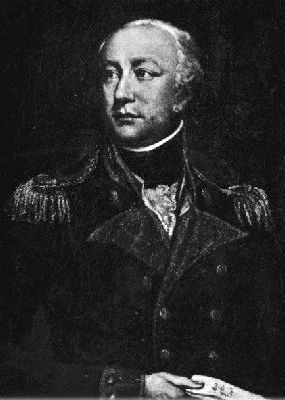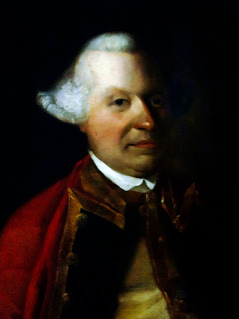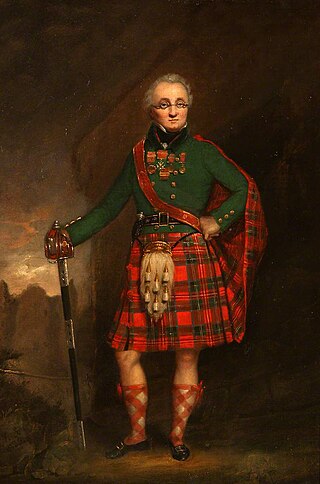Related Research Articles

John Playfair FRSE, FRS was a Church of Scotland minister, remembered as a scientist and mathematician, and a professor of natural philosophy at the University of Edinburgh. He is best known for his book Illustrations of the Huttonian Theory of the Earth (1802), which summarised the work of James Hutton. It was through this book that Hutton's principle of uniformitarianism, later taken up by Charles Lyell, first reached a wide audience. Playfair's textbook Elements of Geometry made a brief expression of Euclid's parallel postulate known now as Playfair's axiom.

Sir Henry Raeburn was a Scottish portrait painter. He served as Portrait Painter to King George IV in Scotland.

Robert Jameson FRS FRSE was a Scottish naturalist and mineralogist.

John Arbuthnott, 8th Viscount of Arbuthnott DL FRSE was a Scottish peer and soldier. Known as "the rich Lord" he built the bridge in front of Arbuthnott House, Kincardineshire. He was the first member of the family who consistently spelled his name "Arbuthnott" rather than "Arbuthnot".

William Kerr, 6th Marquess of Lothian,, was a British soldier, landowner and politician. He was the son of William Kerr, 5th Marquess of Lothian. He served as a representative peer from 1817 to 1824.

The Right Hon. William Adam of Blair Adam was a Scottish advocate, barrister, politician and judge. He served as Solicitor General for Scotland (1802–1805) and as Lord Chief Commissioner of the Jury Court (1815–39).

Restalrig is a small residential suburb of Edinburgh, Scotland. It is located east of the city centre, west of Craigentinny and to the east of Lochend, both of which it overlaps. Restalrig Road is the main route through the area, running from London Road, at Jock's Lodge, to Leith Links. It is in the ward of Lochend.
Lieutenant-General James Murray, 1st Baron Glenlyon, styled as Lord James Murray until 1821, was a Scottish born British Army officer, Member of Parliament and peer.

General Richard Vyse or Vise FRSE was a British general, and briefly a Member of Parliament for Beverley.

William Mudge (1762–1820) was an English artillery officer and surveyor, born in Plymouth, an important figure in the work of the Ordnance Survey.

The Canongate Kirkyard stands around Canongate Kirk on the Royal Mile in Edinburgh, Scotland. The churchyard was used for burials from the late 1680s until the mid-20th century.
General Sir Anthony Farrington, 1st Baronet DCL was a British Army officer of the Royal Artillery. He served in Gibraltar and in the American War of Independence.

General Sir William Green, 1st Baronet, of Marass, Kent was an officer in the British Army.

David Stewart of Garth was a Scottish soldier and later author and antiquarian, whose book, Sketches of the Character, Manners, and Present State of the Highlanders of Scotland published in two volumes by Archibald Constable and Co in Edinburgh in 1822, was responsible for largely creating the modern image of the Highlander, the clans and Scottish regiments and is considered the foundation for all subsequent work on Highlanders, clans and Scottish regiments system.
Dr Victor Ambrose Eyles FRSE FGS (1895–1978) was a British geologist and science historian. He was the founder of the Society for the Bibliography of Natural History in 1936. Joan Eyles, his wife, donated the Eyles Collection, their collection of papers on the history and practice of geology, to the University of Bristol.

Alexander Gillespie FRSE, FRCSEd was a Scottish surgeon. He is one of the few persons to have served two non-consecutive periods as President of the Royal College of Surgeons of Edinburgh. He was President from 1810 to 1812 and again from 1818 to 1820.
Sir Francis Gray, 14th Lord Gray FRS FRSE PSAS was a Scottish peer, politician and soldier.
Dr John Grieve FRS FRSE FSA FRSA (1753–1805) was a Scottish physician who rose to be physician to the Russian royal family. He did much to foster international relationships between Russia and Scotland.

Sir Peter Redford Scott Lang VD FRSE (1850–1926) was a Scottish mathematician and Regius Professor at the University of St Andrews. In the 1880s he instituted “Common Dinners” to bring the students together for joint meals. This had a major impact upon student social life and was thereafter adopted by several Scottish universities. In memory of this the University of St Andrews holds an annual Scott Lang Dinner.
The Queen's Edinburgh Light Infantry Militia was an auxiliary regiment raised in and around the city of Edinburgh in Scotland. It was formed in 1798 and reformed in 1802, but had links with earlier Fencible and Volunteer units from the area. It served in home defence during the Napoleonic Wars and the Crimean War. Later it became a battalion of the Royal Scots and saw active service in South Africa during the Second Boer War. It served as a Special Reserve training unit in World War I, but after 1921 the militia had only a shadowy existence until its final abolition in 1953.
References
- ↑ Rose, Edward (2013). "British pioneers of the geology of Gibraltar, Part 1: the artilleryman Thomas James (ca 1720-1782); infantryman Ninian Imrie of Denmuir (ca 1752-1820); and ex-militiaman James Smith of Jordanhill (1782-1867)". Earth Sciences History. 32 (2): 252–278. doi:10.17704/eshi.32.2.y46w1v7758755766 . Retrieved 9 April 2018.
- ↑ Geology and Warfare: Rose & Nathanail
- ↑ Gentlemans Magazine vol.38
- ↑ Royal Military Calendar
- ↑ Some Geological Correspondence of James Hutton, Eyles & Eyles
- ↑ Biographical index of Former Fellows of the Royal Society of Edinburgh 1783 – 2002 (PDF). The Royal Society of Edinburgh. July 2006. ISBN 0-902-198-84-X.
- ↑ Edinburgh and Leith Post Office Directory 1805–06